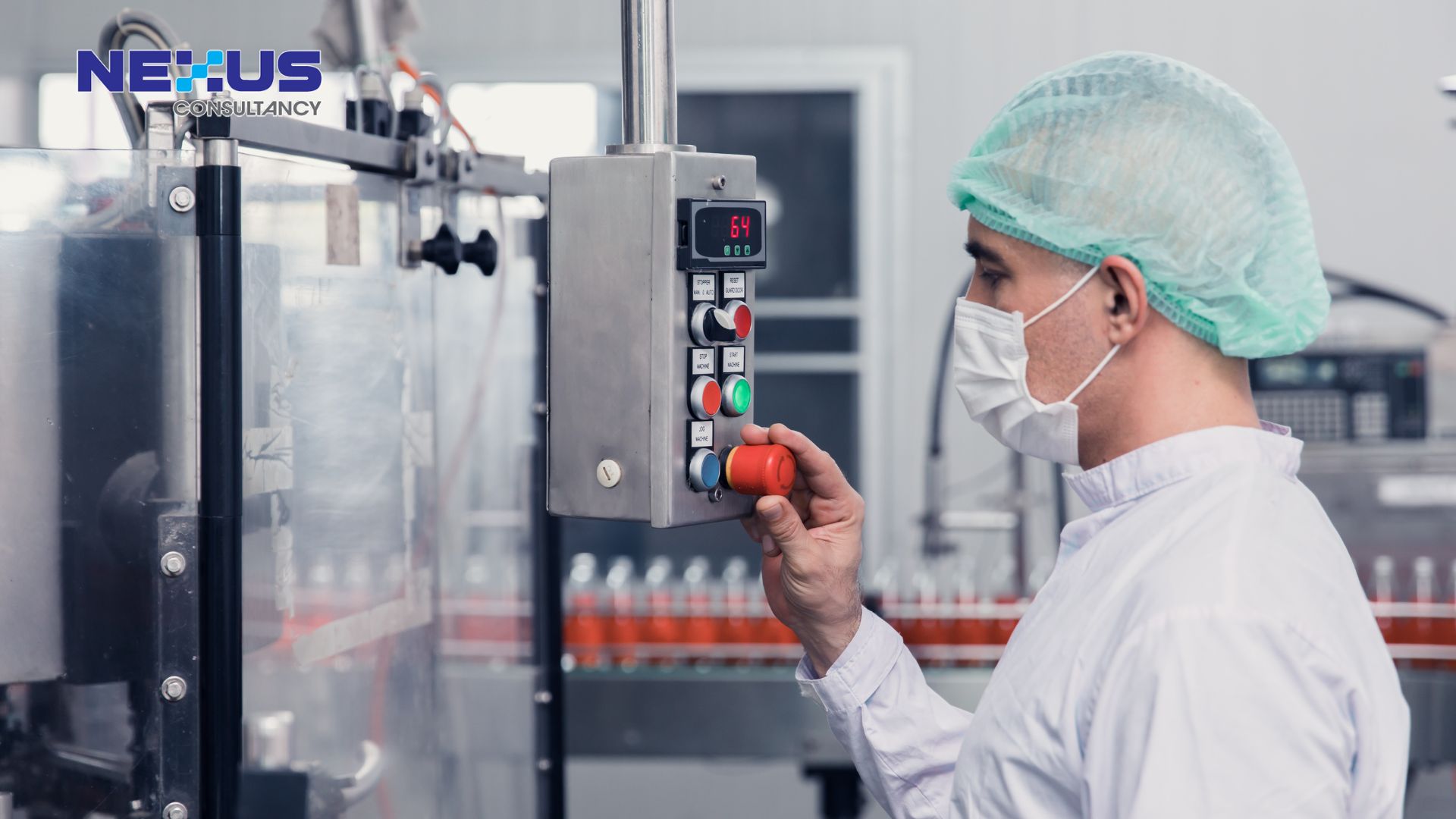
Darren Tang
Director
Successful manufacturers know what to do to implement SOPs and achieve desired results.
– 4 mins read

Whether you’re in the business of manufacturing food products or manufacturing chemicals, we have learnt that standard operating procedures or SOPs help in order for your manufacturing processes to run like a well-oiled machine, to meet both customers’ and organization requirements with minimal errors and wastages.
Successful manufacturers don’t think of what to do at the beginning of the week, they know what to do the achieve desired results, with the implementation of SOPs. But as the manufacturers grow, it becomes more difficult to maintain consistent outputs without sacrificing quality, operational efficiency, and workers’ safety. Have the SOPs developed failed to deliver the intended results? What do manufacturers need to do with their SOPs to ensure accuracy, suitability and effectiveness as their business grow?
Here, let’s look at 4 ways on how to ensure your manufacturing SOPs can consistently bring you results:

1. Seek Workers’ Input
Involve your workers in your decision-making process. Seeking workers’ input would often lead to better results. Ask your workers how their routine tasks should be carried out. As you listen, you may be surprised to learn that certain tasks involve more steps or some would involve fewer steps than you had anticipated. This would mean that the workers could have developed more efficient ways to execute the processes on their own, or it could mean the processes carried out are missing essential steps necessary to ensure quality control, cost control, and workers’ safety.
Besides obtaining first-hand information on how tasks are actually carried out, seeking workers’ input would boost morale. Engaged workers are more likely to be accountable for their tasks and generate better results, stay longer at the company, and experience less burn-out.

2. Develop Workers’ Centric SOPs
While management sees “the big picture,” workers on the ground have their hands in the processes. Put yourself in the workers’ shoes and see what pieces of information they will need to complete the tasks. SOPs must be clearly developed in a way that they leave no room for confusion, ambiguity, or workers’ errors in order to achieve the desired results.
Here is some guidance on how to develop workers’ centric SOPs:
- Write SOPs in language used by workers, for easy understanding.
- Write the task’s scope first, for clarity.
- Keep the SOPs brief and attach photos where required.
- Use flow charts and diagrams to illustrate the processes, for simplicity.
- Use the exact words used on the manufacturing floor, example words on machines and control panels.
- Use consistent format among all company documents.
- Avoid any unfamiliar language, words, abbreviations etc.

3. Train Your Workers
No matter how experienced or specialized your workers may be, they will need to be trained during the implementation of new or revised SOPs; and be retrained as time progress.
Training can be a sensitive area, especially for senior or long-time workers who are used to doing their tasks in a certain way, and who may not yet see the benefits of making the necessary improvements. Therefore, it is important to communicate why the SOPs are introduced. Workers need to see the benefits of the SOPs to them and to the company.
Training is also not supposed to be a one-time process, but an ongoing one. This is to strengthen the commitment that the new or revised SOPs will be the way of carrying out the tasks, and so that workers will get familiar with the SOPs and address any weakness during implementation.

4. Revisit SOPs Regularly
What works best today may no longer be the case in a year or even a few months from now, especially with the many challenges we face now as we recover from the pandemic, global supply shortages, manpower shortages, rising costs, new regulations, and many more.
This is why it’s important to instill a growth mindset among your workers. They need to understand that the new processes are not set in stone, and will evolve over time as the need arises. And that they need to embrace the change. As your workers continue to implement the new or revised SOPs, you should regularly seek feedback on any positive or negative experiences your workers have along the way. Be quick to identify weaknesses and areas of improvement.
SOPs need to be revised and updated when improvements to the processes are carried out. The revision could mean a minor change to the SOP, or could also involve re-establishing an entire document from scratch if need to.
By developing, implementing, training and reviewing workers’ centric SOPs, you enable your workers to be as productive as possible in the current fluid market.
Feel free to contact us to learn more how we use SOP to bring your business to the next level
More Article
What Is Food Safety Culture and Why It Matters More Than Ever
Chief Operating OfficerLearn why food safety culture is a must-have for compliance, brand trust, and growth—backed by ISO consultants in Malaysia.In today’s competitive and tightly regulated food manufacturing landscape, compliance alone is no longer enough. To...
Why Proactive OSH Legal Compliance Is Good for Business Reputation
Chief Operating OfficerWorried about Malaysia’s OSH Act penalties or workplace audit readiness? Discover how proactive OSH compliance builds trust, reduces fines, and supports ESG goals.In today’s competitive market, companies are judged not just by their products or...
Positioning Your Brand for the Future with Strategic ESG Reporting in Malaysia
Chief Operating OfficerLooking to strengthen trust, investor appeal, and brand leadership in sustainability? Learn how ESG reporting in Malaysia is powering business growth. Start your ESG reporting journey with expert support!In a world where trust and transparency...
Why FSSC 22000 Certification Is Critical for Protecting Your Food Business and Brand in Malaysia
Chief Operating OfficerSecure your food business with FSSC 22000 certification! Enhance safety and compliance. Get expert help—Contact us today! In today's competitive food industry, maintaining food safety and consumer trust is essential. Food manufacturers,...










